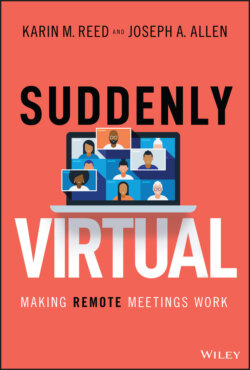Читать книгу Suddenly Virtual - Karin M. Reed - Страница 22
Deeper Connection
ОглавлениеWhether extroverted or introverted, humans are social beings. Taking away our ability to see others chips away at the very core of who we are, and strict social distancing can feel almost cruel to those who thrive on interpersonal contact. No wonder rates of depression have skyrocketed since the pandemic began. For humans, social interaction and social connection are understood as a core human need and the desire to connect is a fundamental drive (Baumeister and Leary 1995). Without it, humans experience distress, children experience developmental delays, loneliness creeps in, and adverse outcomes (e.g. aging, cardiovascular health risk, suicide, and mortality in general) become more common (Hawkley and Cacioppo 2010). Sure, a telephone call helps to lessen those feelings of withdrawal and isolation, but being able to see someone's face, even on a screen, adds a layer of connection that audio alone can't provide.
Video incorporated into virtual communication allows for a much deeper connection than what you can create with a disembodied voice. This is especially true if your relationship with that conversation partner was not fully formed and sufficiently built upon shared in‐person experiences in the first place. If you know someone well, a phone call with that person can feel very personal and satisfying, but that may be at least partially due to the fact that your mind can fill in the gaps of what you can't see. While chatting, you may be visualizing that person's likely body language and facial expressions, all of which gives you a much fuller experience than if you were talking to someone on the phone whom you do not know well. Perhaps you've never even met this person before. You can't fill in the gaps and achieve that satisfying deep connection because you don't have enough backstory to do so.
For those remote meetings where you are not intimately familiar with your fellow attendees, video is invaluable in creating connections that make the interaction impactful. If someone can see you speaking, you have humanized the message and made it much more likely to be remembered. Meeting research supports this idea via media richness theory (Dennis and Kinney 1998). It argues that as we receive more cues as recipients of a message across a given medium, the amount of potential information that can be transferred increases, as does the effectiveness of the communication itself. Not turning video on when meeting in a virtual environment removes one of the most powerful tools you have in conveying your message well.
